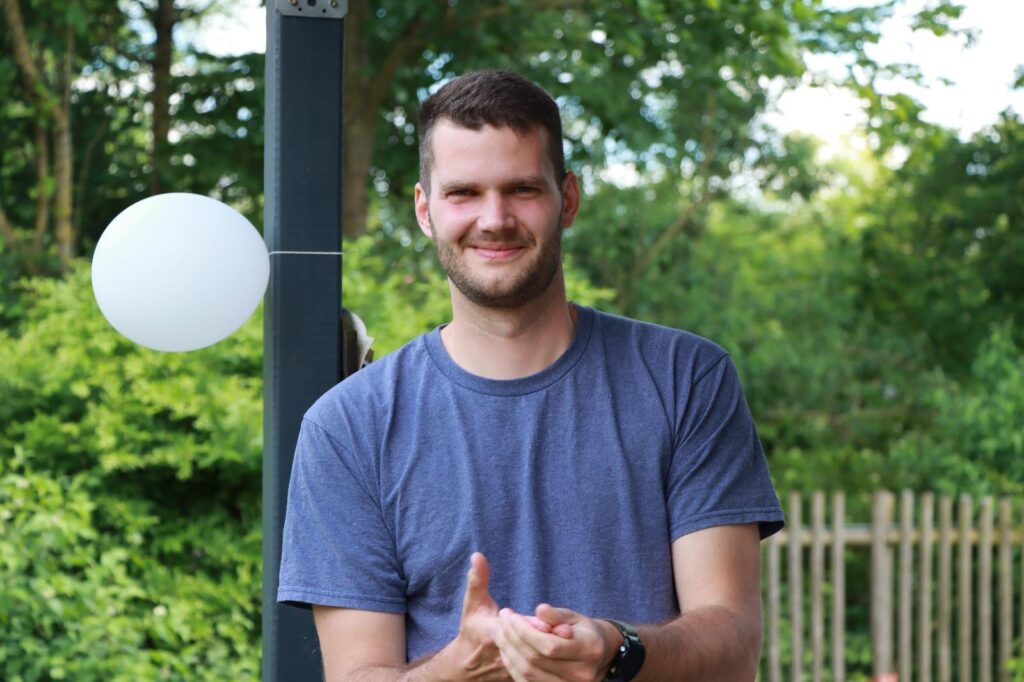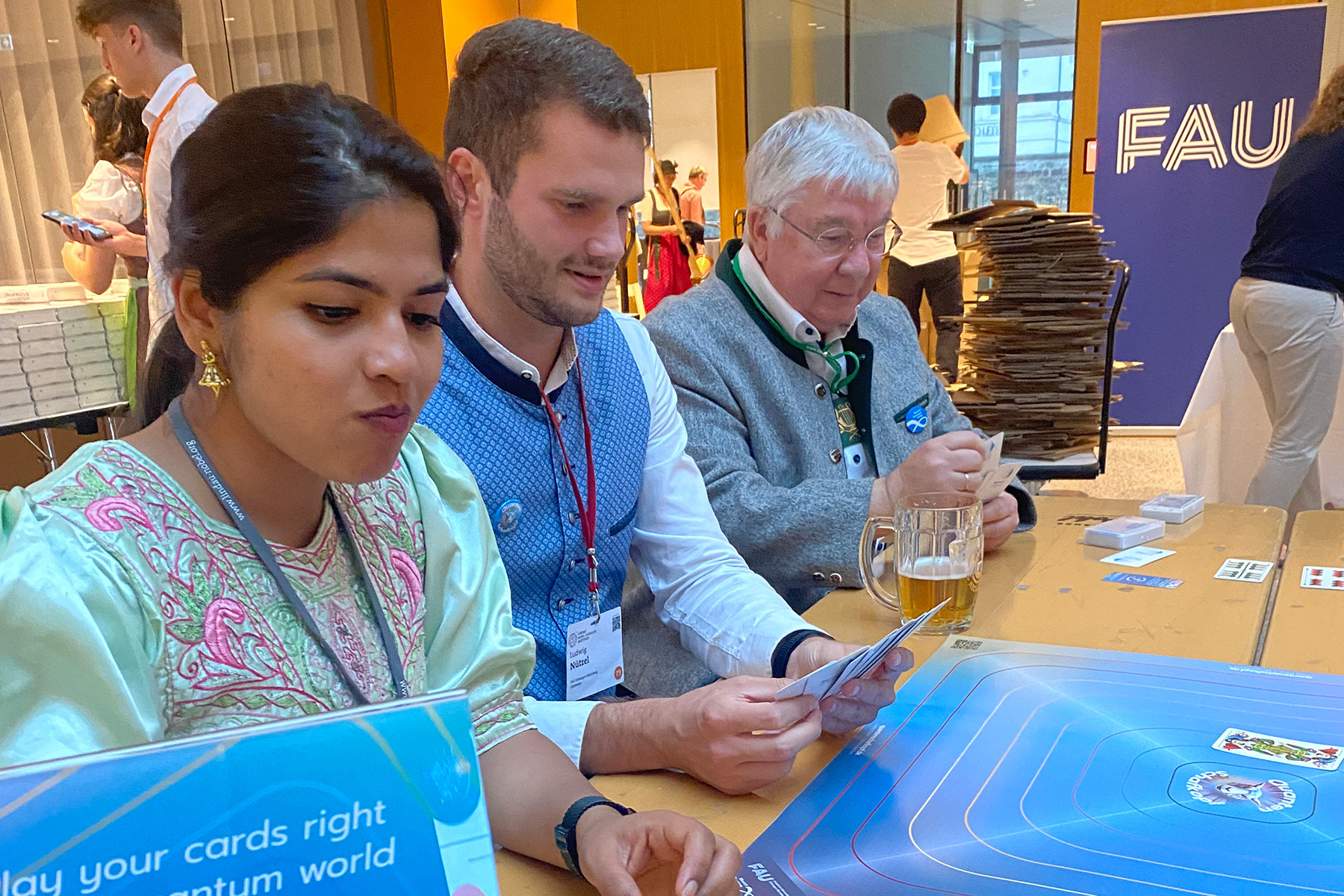The terms “Wenz”, “Solo” and “Sie” are as much part of a Bavarian pub as the beer tap and the regulars’ table. It’s where you’ll often see groups of (usually) four players huddled over their playing cards trying to be the first to get 60 points at the traditional card game known as “Schafkopf”. FAU researcher Ludwig Nützel from the Chair of Theoretical Physics II is also a great fan of “Schafkopf” and has now spiced the game up a little with his new version that introduces elements from the field of quantum physics into the trick-taking game. Sounds a bit strange? Not at all, as he explains in his interview.
FAU researcher Ludwig Nützel combines Schafkopf and quantum physics

Mr. Nützel, you have given the traditional game of Schafkopf an update that includes principles of quantum physics. Where did the idea for this curious project come from?
Ludwig Nützel: During my degree at FAU, I spent a lot of time thinking about matrices and vectors, which are mathematical objects that are used, for example, in quantum computing to carry out calculations. It occurred to me that you could use matrices and vectors to describe the tricks in Schafkopf: Each card is assigned a specific value by a matrix and the cards themselves are described by vectors. The crossover to “QuantenSchafkopf” happened almost by itself. In the same way that a quantum computer can process not just one vector, but several at the same time, the mathematical description of a trick also allows several vectors or cards to be played simultaneously. I wrote down some “quantum tricks” on paper and noticed that it could be quite fun.
Which principles of quantum physics can players get to know during the game?
Ludwig Nützel: In quantum physics, you often get the example of Schrödinger’s cat that is both alive and dead (superposition) until one observes the cat and it takes on one of both those states (wave function collapse). These two concepts are the fundamental elements of QuantenSchafkopf. The game also teaches players about “entanglement”, which is an effect you see in every quantum algorithm and that plays a fundamental role in quantum teleportation. “Interferences”, which are computing operations that a quantum computer uses, can be also found in the game.
Which changes have you made to the traditional card game?
Ludwig Nützel: Sometimes you’re not sure which card to play during Schafkopf. This isn’t the case in QuantenSchafkopf, because you’re allowed to play up to two cards instead of one (superposition). At the end of the round, each player “observes” their cards and one card returns to the player’s hand (“wave function collapse”). What remains is a trick and the winner of the trick is determined using the rules of normal Schafkopf. What makes the new version particularly interesting are the effects I mentioned: “entanglement” and “interference”. They allow players to link their cards and manipulate superpositions in order to have the best chance possible of winning the trick at the end of the round. A description of this is available on www.quantenschafkopf.de. The quantum rules therefore naturally lead to new tactics that just don’t exist in the normal version of Schafkopf. The traditional rules are still there, however, and remain unaffected by the “update”.
Further information
Ludwig Nützel
Chair of Theoretical Physics II
ludwig.nuetzel@fau.de
www.quantenschafkopf.de
X/Twitter: @QSchafkopf, @LudwigNuetzel
Instagram: @quantenschafkopf

